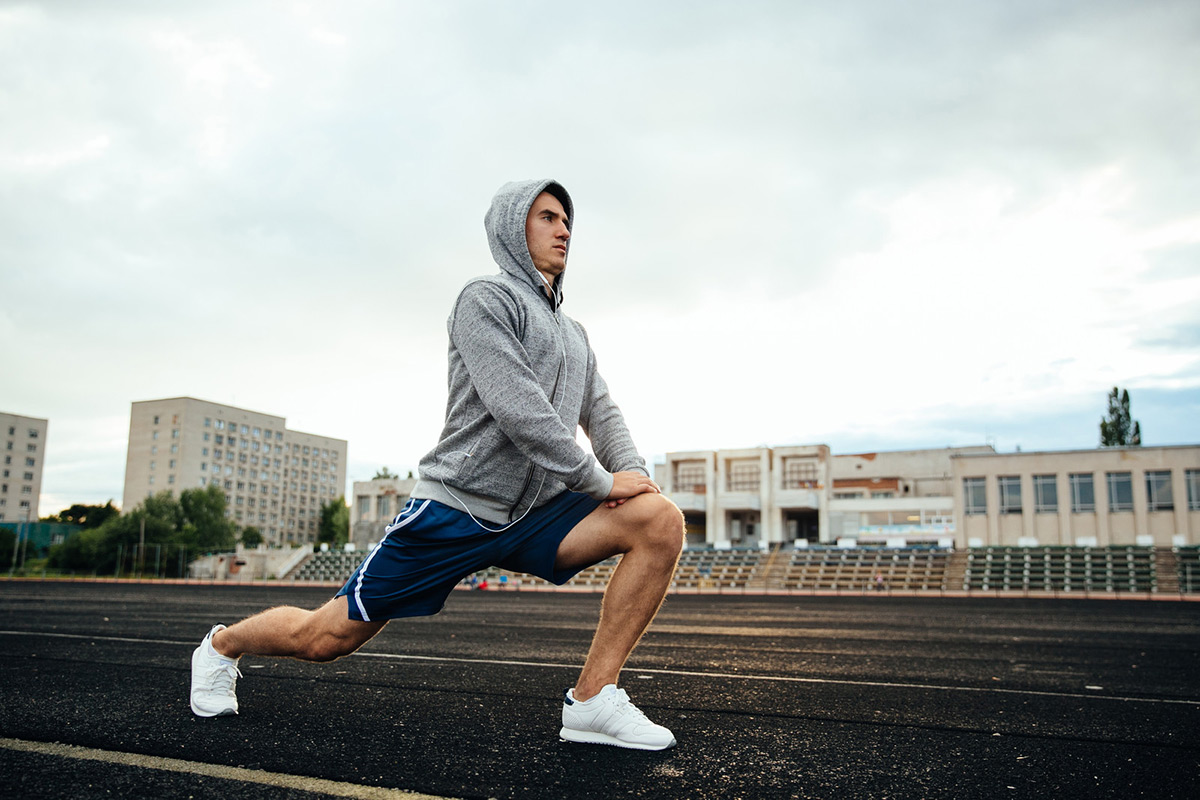Table of contents
Bodyweight lunges are an exercise that requires no equipment. All you need to do this exercise is a little space and motivation. In fact, there are benefits to doing bodyweight lunges every day. You can also do this exercise holding dumbbells for added resistance.
If you use weights when you lunge, your muscles need more recovery time, so you shouldn’t do them more often than every other day. However, you can do bodyweight lunges every day of the week, and there are reasons why you should.

© Can Stock Photo / azovtcev161
First, here’s how to do a standard (or forward) lunge:
- Stand up straight with your feet around hip-width apart.
- Step forward with your left leg as you shift your weight forward onto the right foot.
- Lower your body until your left thigh is parallel to the floor.
- Push up off the floor with your left heel to return to the starting position.
- Repeat with the right leg and keep switching sides.
Bodyweight Lunges Will Improve Your Balance
Most people take their balance for granted when they’re young, but the ability to balance declines with age. That’s one reason older people have a high risk of falling; they lose muscle and they lose the ability to easily stay balanced.
Bodyweight lunges are one of the best exercises for upgrading your balance skills. It’s a dynamic movement where you move a leg in front of or behind you, and that forces your body to make adjustments to maintain balance. In fact, you might feel a little off-balance the first few times you do bodyweight lunges, as your body isn’t accustomed to balancing in such a manner. However, it will get easier over time.
They’ll Boost Your Flexibility Too
Most people who work at home or in an office and sit for most of the day have tight hip flexors from being in a sitting position the majority of the time.
When you sit, your hip flexors shorten and tighten while the opposing muscles, your hip extensors (glutes, hamstrings) lengthen and weaken. Taking a break from sitting to do bodyweight lunges, helps stretch tight, shortened hip flexors. That’s a benefit since tight hip flexors contribute to bad posture and increase the risk of lower back pain.
Bodyweight Lunges Improve Functionality and Coordination
Another benefit of doing bodyweight lunges is that they teach multiple muscles to work together as a unit. When you do a lunge, you activate your hamstrings, quads, glutes, calves, and the muscles in your core.
However, you aren’t working these muscles in isolation; a lunge is a functional movement that teaches these muscles to work together as a group, so that the movements you do every day are easier. You’ve probably noticed that lunges mimic another functional exercise–walking. Lunging can also improve your performance when you play certain sports, especially those that involve bending and reaching, like basketball.
They Burn Calories Too
Bodyweight lunges alone won’t burn a lot of calories, but you can boost the calorie burn by doing walking bodyweight lunges, where you place one leg in front and lunge and then place the other leg in front and lunge again.
By repeating this sequence, you move across the floor as you lunge. Walking lunges burn more calories, depending on how quickly you move across the floor while working your quads, glutes, hamstrings, and even your core muscles.
Bodyweight Lunges Are a Great Way to Start the Day
When you wake up in the morning, bodyweight lunges are an effective way to stretch the muscles in your lower body and get them ready for the upcoming day.
The Bottom Line
If you’re trying to get stronger, you’ll eventually graduate to doing lunges while holding a dumbbell in each hand for added resistance, but, as you can see, lunges are for more than building strength. You’ll get these additional benefits by doing bodyweight lunges alone, and they don’t require equipment.
Once you’ve mastered a basic bodyweight lunge, there are lots of lunge variations you can do with or without dumbbells in your hands. Some examples are reverse lunges, where you step backward instead of forward when you lunge, lateral lunges, curtsy lunges, and more.
References:
- American Council on Exercise. “Are All Lunges Created Equal?”
- J Sports Sci. 2003 Jan;21(1):49-57. doi: 10.1080/0264041031000070958.
- Human Movement Science.Volume 32, Issue 1, February 2013, Pages 65-78.
